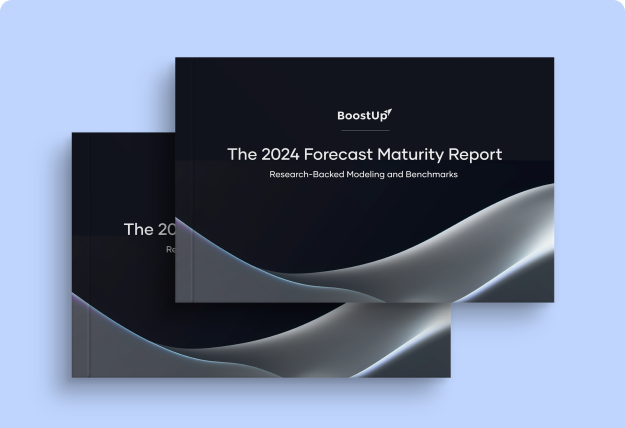The Revenue Blog /
Expert Tips to Make More Accurate Forecasts in 2022
Expert Tips to Make More Accurate Forecasts in 2022

Topics covered in this article
Use these expert tactics to make better sales predictions
Now, more than ever, getting your sales forecast right is crucial. As budgets are tightened, scrutiny is increased, and pressure grows, you must ensure that your forecast is predictable, accurate, and dependable.
As a CRO, Revenue Leader, Sales Leader, and Sales Manager, it’s your job to get the forecast right. To help, we turned to the experts to learn how they drive accurate predictions, ensure goals are met, and create accountability around forecasting.
Here’s what they said…
Partner with Enablement
Imran Musaev, VP of Revenue Operations at Mindtickle recommends those seeking to drive predictability build a bridge to sales enablement.
To get the data required for accurate forecasts, you must go straight to the source. Therefore, a strong relationship with sales enablement allows RevOps to get the tools, platforms and processes required for consistent and correct sales data.
Moreso, the relationship also contributes to a higher close rate. Revenue teams can partner with sales enablement to ensure that the forecasted deals close. RevOps can highlight make-or-break deals for enablement, who can provide the resources, materials, and coaching required to successfully close them. Then, RevOps can see the results of the coaching and enablement efforts within the data captured by enablement.
The RevOps and enablement relationship becomes a mutually beneficial, cohesive loop of surfacing important deals, providing support, capturing the result, and then improving.
Hear more from Imran himself, below.
Establish the Process, People, and Platforms Necessary to Win
At this point, no one is a stranger to the Three P’s… there is a good reason though. The premise of this best practice is applicable to every facet of an organization.
When it comes to forecasting, Navin Persuad’s Three P’s are a little different… They are processes, people, and platforms.
- Efficient, scalable, and repeatable processes
- Guide and enable people to understand and use the processes
- Leverage a unified platform to accelerate business insight.
Your sales forecasting process should be founded upon a defined and repeatable process that everyone involved can easily carry out. The people involved should understand exactly what it is so they know what exactly goes into the forecast and how that impacts it.
Navin says that one of the most crucial components of an accurate forecast is an innate understanding of your business. You must know how the teams, individual sellers, seasonality, product usage, etc. all impact the predictions you make and the probability of them coming true.
Properly Handle Change
Of course, to make your sales forecast more accurate and predictable you must make adjustments to the data and processes used within it.
Making effective changes, especially within a sales organization can be extremely difficult to execute properly. That’s why Roman Gruhn says not to underestimate the time, effort, and resources required to make changes, as sellers and their managers have many other responsibilities they would rather pay attention to.
He suggests you invest in separate enablement programs for each level of the organization, from the individual contributor, up to the senior executives. These should explain to them why the changes are needed, and how they will benefit from it on a personal level.
You should show them why they should go through the hassle of changing what they do and learning something new.
Great Sales Forecasting Comes from a Great Process
In the end, great processes lead to great forecasts. But, it goes beyond just your forecasting process. As BoostUp's own Lucas Lamb says, to create truly accurate, consistent, and predictable forecasts, you need to build a process that spans sales, RevOps, and enablement. Your forecasting process should be part of the sales process, and so on.
Not only does that ensure that your data is correct, but that there is buy-in and involvement from every team.




-Photoroom.png)